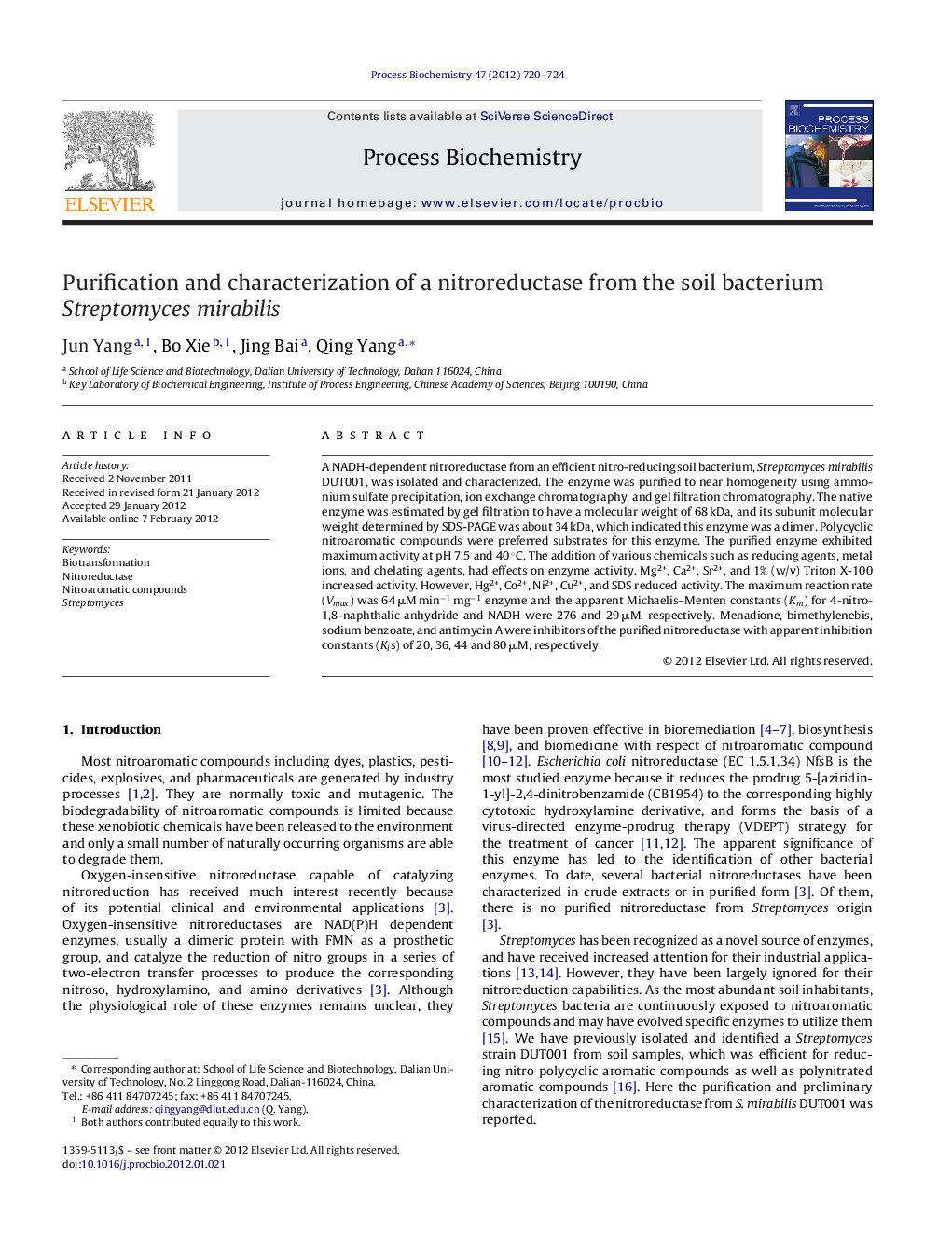| Article ID | Journal | Published Year | Pages | File Type |
|---|---|---|---|---|
| 34564 | Process Biochemistry | 2012 | 5 Pages |
A NADH-dependent nitroreductase from an efficient nitro-reducing soil bacterium, Streptomyces mirabilis DUT001, was isolated and characterized. The enzyme was purified to near homogeneity using ammonium sulfate precipitation, ion exchange chromatography, and gel filtration chromatography. The native enzyme was estimated by gel filtration to have a molecular weight of 68 kDa, and its subunit molecular weight determined by SDS-PAGE was about 34 kDa, which indicated this enzyme was a dimer. Polycyclic nitroaromatic compounds were preferred substrates for this enzyme. The purified enzyme exhibited maximum activity at pH 7.5 and 40 °C. The addition of various chemicals such as reducing agents, metal ions, and chelating agents, had effects on enzyme activity. Mg2+, Ca2+, Sr2+, and 1% (w/v) Triton X-100 increased activity. However, Hg2+, Co2+, Ni2+, Cu2+, and SDS reduced activity. The maximum reaction rate (Vmax) was 64 μM min−1 mg−1 enzyme and the apparent Michaelis–Menten constants (Km) for 4-nitro-1,8-naphthalic anhydride and NADH were 276 and 29 μM, respectively. Menadione, bimethylenebis, sodium benzoate, and antimycin A were inhibitors of the purified nitroreductase with apparent inhibition constants (Kis) of 20, 36, 44 and 80 μM, respectively.
► A 68 kDa nitroreductase from the strain Streptomyces was isolated and characterized. ► Its preferred substrate is polycyclic nitroaromatic compounds. ► The optimal condition for enzymatic activity is pH 7.5 and 40 °C. ► N-terminus amino acid sequence suggests its a novel nitroreductase.
